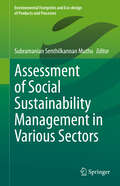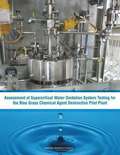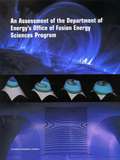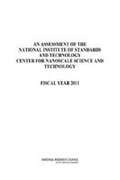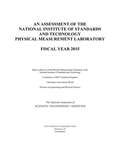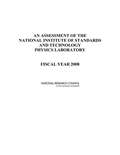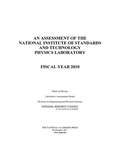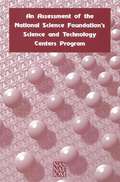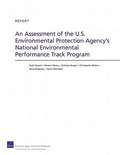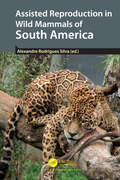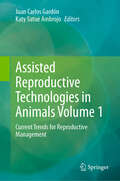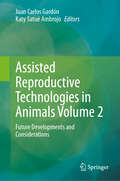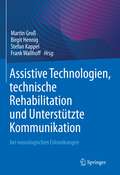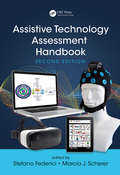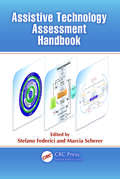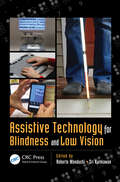- Table View
- List View
Assessment of Social Sustainability Management in Various Sectors (Environmental Footprints and Eco-design of Products and Processes)
by Subramanian Senthilkannan MuthuThis volume presents a variety of case studies detailing how imperatives of social sustainability are handled in several industries. The first chapter written by the volume editor provides context for social sustainability and explains how the following chapters fit together. The following five chapters detail cases from the textile industry, technology firms, agriculture, and the healthcare industry.
Assessment of Supercritical Water Oxidation System Testing for the Blue Grass Chemical Agent Destruction Pilot Plant
by Committee to Assess Supercritical Water Oxidation System Testing for the Blue Grass Chemical Agent Destruction Pilot Plant National Research Council Board on Army Science and Technology Division on Engineering and Physical SciencesAssessment of Supercritical Water Oxidation System Testing for the Blue Grass Chemical Agent Destruction Pilot Plant reviews and evaluates the results of the tests conducted on one of the SCWO units to be provided to Blue Grass Chemical Agent Destruction Pilot Plant. The Army Element, Assembled Chemical Weapons Alternatives (ACWA) is responsible for managing the conduct of destruction operations for the remaining 10 percent of the nation's chemical agent stockpile, stored at the Blue Grass Army Depot (Kentucky) and the Pueblo Chemical Depot (Colorado). Facilities to destroy the agents and their associated munitions are currently being constructed at these sites. The Blue Grass Chemical Agent Destruction Pilot Plant (BGCAPP) will destroy chemical agent and some associated energetic materials by a process of chemical neutralization known as hydrolysis. The resulting chemical waste stream is known as hydrolysate. Among the first-of-a-kind equipment to be installed at BGCAPP are three supercritical water oxidation (SCWO) reactor systems. These particular hydrolysate feeds present unique non-agent-related challenges to subsequent processing via SCWO due to their caustic nature and issues of salt management.This report provides recommendations on SCWO systemization testing inclusive of durability testing and discusses systemization testing objectives and concepts.
Assessment of the AHRQ Patient Safety Initiative
by Donna O. Farley Michael D. Greenberg Melony E. Sorbero M. Susan Ridgely Cheryl L. DambergUpdates the policy context of the Agency for Healthcare Research and Quality (AHRQ) patient safety initiative; documents the current priorities and activities undertaken; and assesses contributions of health information technology projects and dissemination actions to support adoption of evidence-based safe practices. Discusses implications for future AHRQ policy, programming, and research; suggests ways to strengthen AHRQ activities.
An Assessment of the Department of Energy's Office of Fusion Energy Sciences Program
by National Research CouncilThe National Academies Press (NAP)--publisher for the National Academies--publishes more than 200 books a year offering the most authoritative views, definitive information, and groundbreaking recommendations on a wide range of topics in science, engineering, and health. Our books are unique in that they are authored by the nation's leading experts in every scientific field.
Assessment of the Fate of Surrogates for Enteric Pathogens Resulting From the Surcharging of Combined Sewer Systems (IHE Delft PhD Thesis Series)
by Iosif Marios ScoullosIn the last ten years (2009-2019), flooding caused the death of over 48,000 people, and affected over 697 million people globally. This is expected to increase as a result of climate change, population growth and urbanisation. Floods can cause infections due to the release of water-borne pathogens from surcharged combined sewers and other sources of faecal contamination on urban surfaces such as concrete, asphalt, gravel, pavement, playground rubber tiles and grass. Using laboratory experiments with faecal indicator bacteria Escherichia coli, and with Bacillus subtilis spores, and MS2 bacteriophages under controlled exposure to simulated sunlight, this research contributes towards a better understanding of the environmental parameters that affect the concentration of pathogens in contaminated shallow water bodies and on different urban surfaces. Also, several sampling methods are assessed for the recovery of bacteria from flood-prone urban surfaces. This study suggests that given the sunlight conditions after an urban flood, the concentration of indicator organisms and of total suspended solids and the surface type it is possible to estimate the fate of selected pathogens. The observations and results presented in this study contribute to the development of policy-making tools for rapid implementation of appropriate measures to mitigate public health risks after flooding. This book:- highlights the relation of urban floods with water-borne diseases.-stresses for the first time the importance of urban surfaces (pavement, concrete, asphalt, etc.) on the inactivation of water-borne pathogens.-provides equations that can be used to develop policy-making tools for implementation of appropriate measures to mitigate public health risks after flooding.
An Assessment of the International Science and Technology Center: Redirecting Expertise in Weapons of Mass Destruction in the Former Soviet Union
by Office of International AffairsThis report reviews the ISTC's objectives and plans, discussed its activities with U.S. and FSU officials, and met with FSU grant recipients and institute directors. The committee concludes that during its first two years the ISTC was successful and effective in meeting its primary objective, which, in turn, has contributed to the larger goal of diminishing the risk of weapons proliferation. Moreover, the opportunities provided to FSU scientists and engineers do indeed offer meaningful nonweapons-related work, which helps address the demoralization that may otherwise contribute to scientists' being lured into work for unfriendly governments. The committee believes the ISTC has also been successful in addressing its secondary objectives—namely, the solution of national and international technical problems; the support of basic and applied research and technology development for peaceful purposes; and, to a lesser degree, reinforcement of the transition of the FSU to a market-driven economy.
An Assessment of the National Institute of Standards and Technology Center for Nanoscale Science and Technology: Fiscal Year 2011
by Panel on Nanoscale Science TechnologySince 1959, the National Research Council (NRC), at the request of the National Institute of Standards and Technology (NIST), has annually assembled panels of experts to assess the quality and effectiveness of the NIST measurements and standards laboratories. In 2011, the NRC evaluated three of the six NIST laboratories: the Center for Nanoscale Science and Technology (CNST), the NIST Center for Neutron Research (NCNR) and the Information Technology Laboratory (ITL). Each of these was addressed individually by a separate panel of experts; this report assesses CNST.
An Assessment of the National Institute of Standards and Technology Center for Neutron Research: Fiscal Year 2013
by National Research Council of the National AcademiesThe National Institute of Standards and Technology (NIST) Center for Neutron Research (NCNR), with its strong tradition of hiring and developing excellent scientific and technical staff, is one of the leading institutions worldwide in neutron instrumentation, technology, and science. It is a very well-managed user facility. With the recent completion of a $95 million expansion, performed on time and on budget, it has enhanced its instrumentation capabilities and has constructed a new guide hall. This expansion further enhances NCNR’s ability to meet high user demands—a factor of two higher than capacity—for experimentation to conduct cutting-edge research. NCNR’s high scientific productivity is due, in part, to effective communication between the management and staff and with the internal and external user communities. <P> To continue to respond effectively to a changing environment and opportunities afforded by the recent reorganization of NIST, the NCNR management should pay particular attention to the considerations below to ensure that the NCNR continues to effectively serve its mission. <P><P> NCNR management has historically done an excellent job at short-term, tactical planning. The NIST reorganization now provides them with an opportunity to operate more strategically. Because in the near future some of the more senior scientific and technical staff will be retiring, formalized succession planning needs to be performed in coordination with the broader NIST management.
An Assessment of the National Institute of Standards and Technology Physical Measurement Laboratory: Fiscal Year 2015
by National Academies of Sciences Engineering MedicineThe Physical Measurement Laboratory (PML) at the National Institute of Standards and Technology (NIST) is dedicated to three fundamental and complementary tasks: (1) increase the accuracy of our knowledge of the physical parameters that are the foundation of our technology-driven society; (2) disseminate technologies by which these physical parameters can be accessed in a standardized way by the stakeholders; and (3) conduct research at both fundamental and applied levels to provide knowledge that may eventually lead to advances in measurement approaches and standards. This report assesses the scientific and technical work performed by the PML and identifies salient examples of accomplishments, challenges, and opportunities for improvement for each of its nine divisions.
An Assessment of the National Institute of Standards and Technology Physics Laboratory
by Laboratory Assessments Board Panel On Physics National Research Council Division on Engineering and Physical SciencesThe mission of the NIST Physics Laboratory is to support U.S. industry, government, and the scientific community by providing measurement services and research for electronic, optical, and radiation technology. In this respect, the laboratory provides the foundation for the metrology of optical and ionizing radiations, time and frequency, and fundamental quantum processes, historically major areas of standards and technology. The Panel on Physics visited the six divisions of the laboratory and reviewed a selected sample of their programs and projects. This book finds that the overall quality and productivity of the Physics Laboratory are comparable to or better than those of other peer institutions, an accomplishment that is being achieved with an infrastructure that is smaller in both size and funding than the size and funding of most national and agency laboratories in the United States.
An Assessment of the National Institute of Standards and Technology Physics Laboratory: Fiscal Year 2010
by National Research Council of the National AcademiesThe mission of the National Institute of Standards and Technology (NIST) Physics Laboratory is to support U.S. industry, government, and the scientific community by providing measurement services and research for electronic, optical, and radiation technology. In this respect, the laboratory provides the foundation for the metrology of optical and ionizing radiations, time and frequency, and fundamental quantum processes, historically major areas of standards and technology. The Panel on Physics visited the six divisions of the laboratory and reviewed a selected sample of their programs and projects.
An Assessment of the National Science Foundation's Science and Technology Centers Program
by Committee on Science Engineering Public PolicyAn Assessment of the National Science Foundation's Science and Technology Centers Program
An Assessment of the Prospects for Inertial Fusion Energy
by Board on Physics and Astronomy Division on Engineering and Physical Sciences Board on Energy and Environmental Systems Committee on the Prospects for Inertial Confinement Fusion Energy Systems National Research CouncilThe potential for using fusion energy to produce commercial electric power was first explored in the 1950s. Harnessing fusion energy offers the prospect of a nearly carbon-free energy source with a virtually unlimited supply of fuel. Unlike nuclear fission plants, appropriately designed fusion power plants would not produce the large amounts of high-level nuclear waste that requires long-term disposal. Due to these prospects, many nations have initiated research and development (R&D) programs aimed at developing fusion as an energy source. Two R&D approaches are being explored: magnetic fusion energy (MFE) and inertial fusion energy (IFE). An Assessment of the Prospects for Inertial Fusion Energy describes and assesses the current status of IFE research in the United States; compares the various technical approaches to IFE; and identifies the scientific and engineering challenges associated with developing inertial confinement fusion (ICF) in particular as an energy source. It also provides guidance on an R&D roadmap at the conceptual level for a national program focusing on the design and construction of an inertial fusion energy demonstration plant.
Assessment of the Results of External Independent Reviews for U.S. Department of Energy Projects
by National Research Council of the National AcademiesThe National Academies Press (NAP)--publisher for the National Academies--publishes more than 200 books a year offering the most authoritative views, definitive information, and groundbreaking recommendations on a wide range of topics in science, engineering, and health. Our books are unique in that they are authored by the nation's leading experts in every scientific field.
An Assessment Of The Sbir Program At The National Science Foundation
by National Research Council of the National AcademiesThe Small Business Innovation Research (SBIR) program is one of the largest examples of U.S. public-private partnerships. Founded in 1982, SBIR was designed to encourage small business to develop new processes and products and to provide quality research in support of the many missions of the U.S. government, including health, energy, the environment, and national defense. In response to a request from the U.S. Congress, the National Research Council assessed SBIR as administered by the five federal agencies that together make up 96 percent of program expenditures. This book, one of six in the series, reports on the SBIR program at the National Science Foundation. The study finds that the SBIR program is sound in concept and effective in practice, but that it can also be improved. Currently, the program is delivering results that meet most of the congressional objectives, including stimulating technological innovation, increasing private-sector commercialization of innovations, using small businesses to meet federal research and development needs, and fostering participation by minority and disadvantaged persons. The book suggests ways in which the program can improve operations, continue to increase private-sector commercialization, and improve participation by women and minorities.
An Assessment of the Science Proposed for the Deep Underground Science and Engineering Laboratory(DUSEL)
by Ad Hoc Committee to Assess the Science Proposed for a Deep Underground Science Engineering LaboratoryAccording to the big bang theory, our Universe began in a state of unimaginably high energy and density, contained in a space of subatomic dimensions. At that time, unlike today, the fundamental forces of nature were presumably unified and the particles present were interacting at energies not attainable by present-day accelerators. Underground laboratories provide the conditions to investigate processes involving rare phenomena in matter and to detect the weak effects of highly elusive particles by replicating similar environments to those once harnessed during the earliest states of the Earth. These laboratories now appear to be the gateway to understanding the physics of the grand unification of the forces of nature. Built to shield extremely sensitive detectors from the noise of their surroundings and the signals associated with cosmic rays, underground facilities have been established during the last 30 years at a number of sites worldwide. To date, the United States' efforts to develop such facilities have been modest and consist primarily of small underground laboratories. However, the U. S. underground community has pushed for larger underground facilities on the scale of major laboratories in other countries. An Assessment of the Deep Underground Science and Engineering Laboratory (DUSEL) addresses this matter by evaluating the major physics questions and experiments that could be explored with the proposed DUSEL. Measuring the potential impact, this assessment also examines the broader effects of the DUSEL in regards to education and public outreach, and evaluates the need associated with developing U. S. programs similar to science programs in other regions of the world.
An Assessment of the U.S. Environmental Protection Agency's National Environmental Performance Track Program
by Rena Rudavsky Noreen Clancy Nicholas Burger Christopher Nelson Scott HassellThis report addresses the conceptual basis, design, and implementation of the National Environmental Performance Track program. The voluntary program sought to encourage facilities to improve their environmental performance and provide a more collaborative relationship between facilities and regulators. While the program had mixed success, EPA should continue to seek out new approaches to complement and enhance traditional regulatory approaches.
Assigning Structures to Ions in Mass Spectrometry
by John L. Holmes Christiane Aubry Paul M. MayerAssigning Structures to Ions in Mass Spectrometry describes the tools currently available for determining gas-phase ion structures. It surveys current experimental methods for ion production and separation as well as those designed to reveal qualitative and quantitative aspects of gas-phase ions. It also examines how and when to apply computational chemistry and theoretical calculations. Selected case studies illustrate specific challenges associated with ion structure assignment and thermochemical problems. Bringing together key results collected over the past four decades, the book contains the data for describing or identifying ions containing C alone and C with H, O, N, S, P, halogens, and small organic cations.
Assisted Reproduction in Wild Mammals of South America
by Alexandre Rodrigues SilvaSouth America has one of the greatest riches in the world in terms of biodiversity. Despite all this richness, recent reports warn of different threats to this biodiversity. As a strategy to reduce the rate of loss of animal species, the development and application of assisted reproduction techniques (ARTs) for their conservation currently stands out. Thus, this book compiles information on recent scientific studies regarding the development of ARTs for the conservation of wild mammalian species in South America, thus serving as an important source of reference for professionals and students interested in wildlife conservation.
Assisted Reproductive Technologies in Animals Volume 1: Current Trends for Reproductive Management
by Juan Carlos Gardón Katy Satué AmbrojoThis Volume 1 of a two-volume topical collection highlights reproductive biotechnologies applied to males and females of different animal species. Organized in five parts, you will find a detailed review of the most relevant topics for reproduction management in equines, cattle, swine, and small ruminants. The authors discuss genomic selection, the use of ultrasound, sperm evaluation and conservation, oocyte retrieval, embryonic development, and significant clinical aspects such as stress and physiological impacts, including thermal conditions. Each contributor brings an own perspective, knowledge, and writing style, resulting in the latest research results, advances, and current trends in assisted reproductive technologies. The volume also includes case studies and hands-on examples to provide readers with real-life applications. The practical approach will enhance the learning experience and differentiates this work from mainly theoretical literature. Specifically tailored to the professional audience within the field of assisted animal reproduction, this book will update veterinarians, researchers, animal breeders, and advanced students. By presenting innovative techniques and approaches not widely covered in other works, this volume offers new perspectives and ideas for reproductive management.
Assisted Reproductive Technologies in Animals Volume 2: Future Developments and Considerations
by Juan Carlos Gardón Katy Satué AmbrojoThis Volume 2 of a two-volume topical collection highlights reproductive biotechnologies applied to males and females of different animal species. Organized in two parts, you will find a detailed review of the latest developments in reproduction management for equines, cattle, swine, and birds. The authors discuss the application of ultrasonography, equine cloning, animal germplasm banks, the captive breeding of threatened wild birds, as well as nanotechnologies and artificial intelligence. Vivid illustrations complement the rich information. Each contributor brings an own perspective, knowledge, and writing style, resulting in the latest research results, advances, and current trends in assisted reproductive technologies. The work also includes case studies and hands-on examples to provide readers with real-life applications. The practical approach will enhance the learning experience and differentiates this volume from mainly theoretical literature. Specifically tailored to the professional audience within the field of assisted animal reproduction, this book will update veterinarians, researchers, animal breeders, and advanced students. By presenting innovative techniques and approaches not widely covered in other works, this volume offers new perspectives and ideas for reproductive management.
Assistive Technologien, technische Rehabilitation und Unterstützte Kommunikation: bei neurologischen Erkrankungen
by Martin Groß Birgit Hennig Stefan Kappel Frank WallhoffDas interdisziplinäre Grundlagenwerk informiert aus der Perspektive von Neurologie, Rehabilitation, Ingenieurwesen, Pädagogik und Physiotherapie sowie aus Sicht der Patienten über Möglichkeiten und Grenzen des Einsatzes von Technik, um die Teilhabe neurologisch erkrankter Menschen zu verbessern. Ziel des Buches ist, allen Berufsgruppen, die an der Behandlung schwer und komplex erkrankter neurologischer Patienten beteiligt sind, ein umfassendes Verständnis assistiver und rehabilitativer Technologien zu vermitteln.
Assistive Technology Assessment Handbook (Rehabilitation Science in Practice Series)
by Stefano Federici Marcia SchererAssistive Technology Assessment Handbook, Second Edition, proposes an international ideal model for the assistive technology assessment process, outlining how this model can be applied in practice to re-conceptualize the phases of an assistive technology delivery system according to the biopsychosocial model of disability. The model provides reference guidelines for evidence-based practice, guiding both public and private centers that wish to compare, evaluate, and improve their ability to match a person with the correct technology model. This second edition also offers a contribution to the Global Cooperation on Assistive Technology (GATE) initiative, whose activities are strongly focused on the assistive products service delivery model. Organized into three parts, the handbook: gives readers a toolkit for performing assessments; describes the roles of the assessment team members, among them the new profession of psychotechnologist; and reviews technologies for rehabilitation and independent living, including brain–computer interfaces, exoskeletons, and technologies for music therapy. Edited by Stefano Federici and Marcia J. Scherer, this cross-cultural handbook includes contributions from leading experts across five continents, offering a framework for future practice and research.
Assistive Technology Assessment Handbook (Rehabilitation Science in Practice Series)
by Stefano Federici Marcia J. SchererThe process of matching a person who has a disability with the most appropriate assistive technology requires a series of assessments, typically administered by multidisciplinary teams at specialized centers for technical aid. Assistive Technology Assessment Handbook fills the need for a reference that helps assistive technology experts perform ass
Assistive Technology for Blindness and Low Vision (Rehabilitation Science in Practice Series)
by Roberto Manduchi Sri KurniawanAssistive technology has made it feasible for individuals with a wide range of impairments to engage in many activities, such as education and employment, in ways not previously possible. The key factor is to create consumer-driven technologies that solve the problems by addressing the needs of persons with visual impairments. Assistive Technology for Blindness and Low Vision explores a broad range of technologies that are improving the lives of these individuals. Presenting the current state of the art, this book emphasizes what can be learned from past successful products, as well as what exciting new solutions the future holds.Written by world-class leaders in their field, the chapters cover the physiological bases of vision loss and the fundamentals of orientation, mobility, and information access for blind and low vision individuals. They discuss technology for multiple applications (mobility, wayfinding, information access, education, work, entertainment), including both established technology and cutting-edge research. The book also examines computer and digital media access and the scientific basis for the theory and practice of sensory substitution.This volume provides a holistic view of the elements to consider when designing assistive technology for persons with visual impairment, keeping in mind the need for a user-driven approach to successfully design products that are easy to use, well priced, and fill a specific need. Written for a broad audience, this book provides a comprehensive overview and in-depth descriptions of current technology for designers, engineers, practitioners, rehabilitation professionals, and all readers interested in the challenges and promises of creating successful assistive technology.
